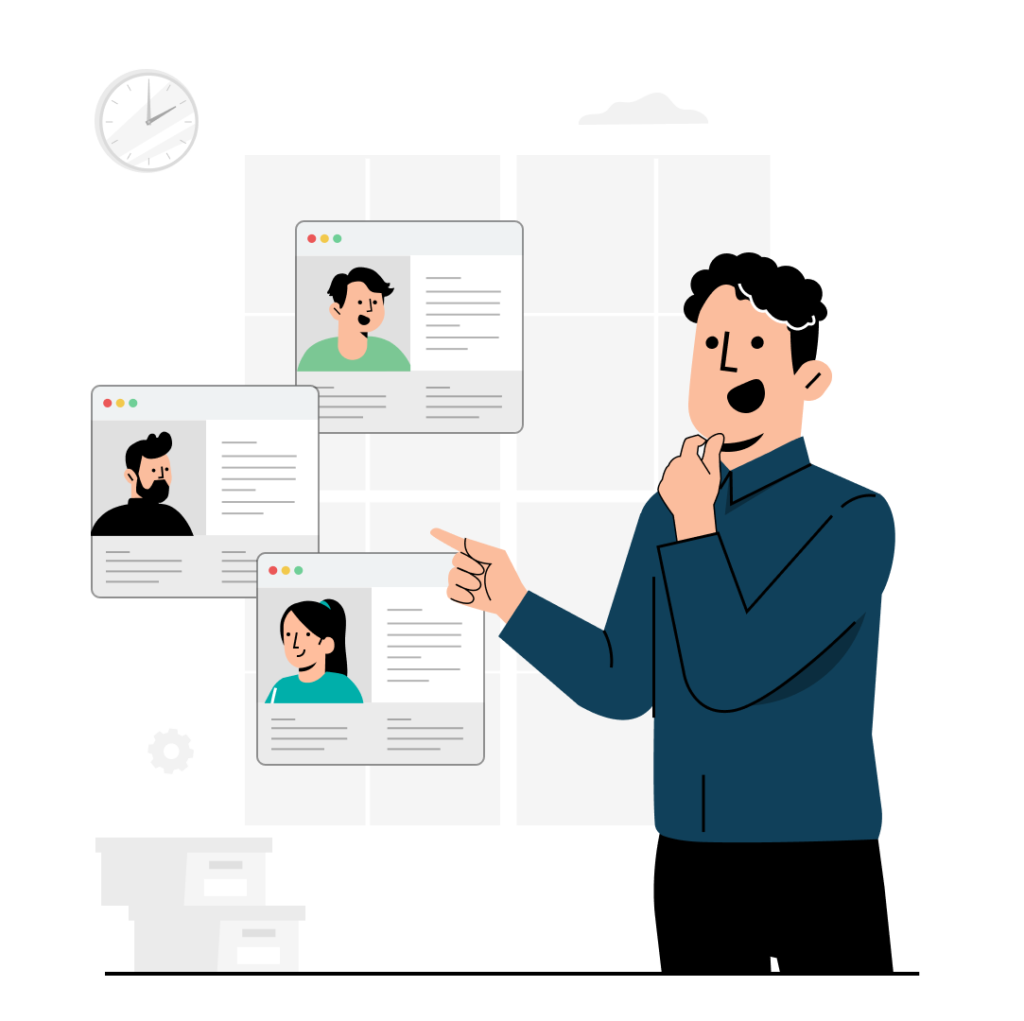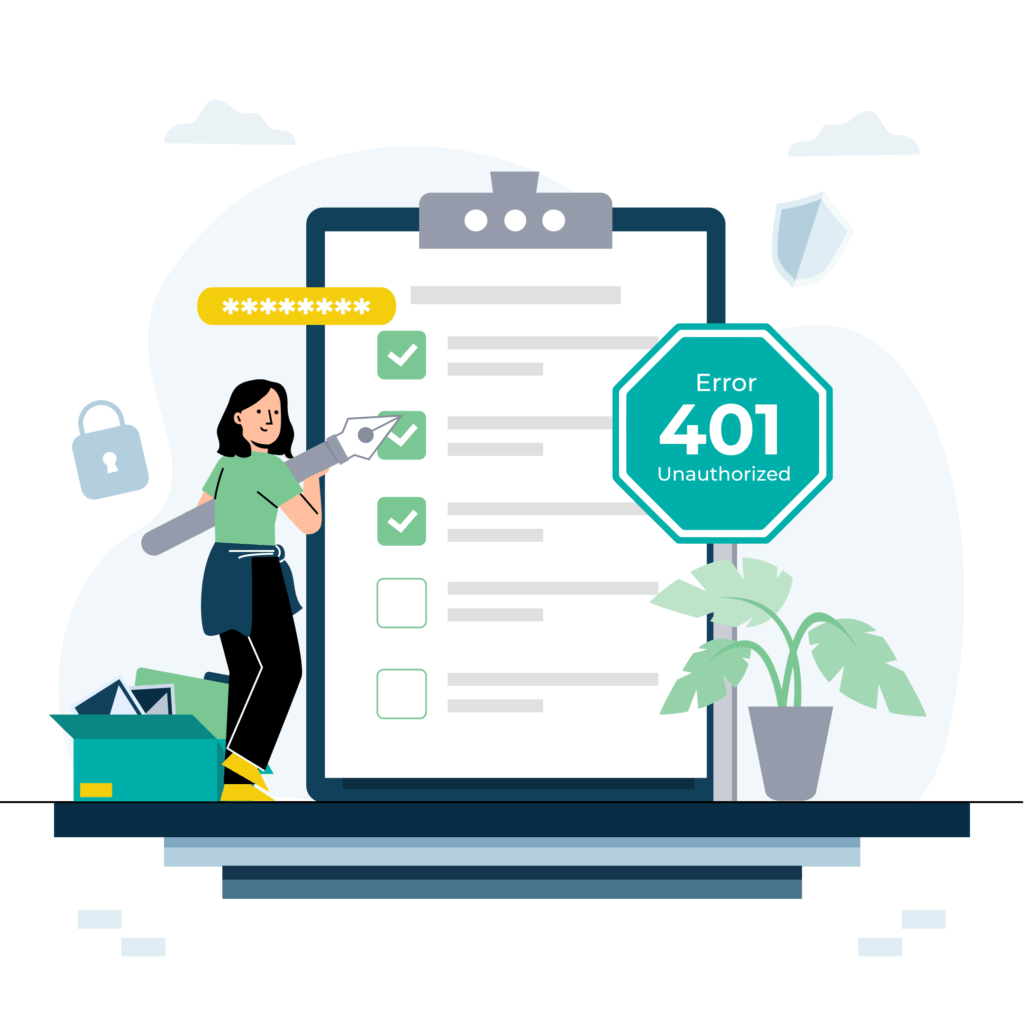You’re staring at 50+ competing AI agent orchestration platforms. Pick the wrong one and you’re locked in for 5+ years—costs millions in implementation effort to fix.
Most vendors give you marketing-focused comparisons. You won’t find objective evaluation frameworks. Implementation costs stay hidden until you’re deep into procurement. And there’s basically no guidance on exit strategies, which matters because vendor lock-in can prevent platform switching.
This article is part of our comprehensive guide to understanding AI agents and autonomous systems, where we explore the complete landscape of agent development and deployment. Here, you’ll learn structured evaluation frameworks with scorecards, comparative analysis, financial models, and risk assessment tools. You’ll save weeks of evaluation time, reduce selection regret, and justify investment to executives with clear ROI calculations.
Why Platform Selection Matters More Than Ever in 2025
50+ competing platforms means evaluation paralysis. Pick wrong and you’re locked in for 5+ years, spending millions on implementation that turns into sunk costs.
Early market movers are establishing dominance. GitHub Agent HQ (launched October 28, 2025), Flowise (acquired by Workday), and Azure AI Foundry are establishing their positions. This market is still forming. Choices you make now shape your options for years.
Time-to-value drives business outcomes. Your platform selection determines how quickly orchestration delivers ROI. Early adopters in financial services, healthcare, and tech are measuring ROI in weeks to months.
Vendor survival risk is real. The collapse of Builder.ai is a warning: overreliance on proprietary AI platforms leaves businesses stranded.
How Do Enterprise-Ready Orchestration Platforms Compare Across Categories?
Cloud-native platforms like AWS Bedrock, Azure AI, Google Vertex, and IBM Watsonx offer managed services but create vendor lock-in. Commercial platforms like n8n and Flowise balance flexibility with ease-of-use. Open-source frameworks like LangChain and CrewAI require development resources but give you maximum independence.
Your platform selection depends on your priorities: flexibility vs. convenience, total cost of ownership, implementation timeline, and team expertise.
Cloud-Native Enterprise Platforms
AWS Bedrock Agents offers model flexibility through multi-model support but cost opacity at scale. Enterprises prefer keeping their AI close to existing data.
Azure AI Foundry provides Microsoft ecosystem integration and GitHub integration. Enterprise support and compliance are included, but it deepens your Microsoft dependency.
Google Vertex AI Agent Builder integrates Gemini models well, but the ecosystem is smaller.
IBM Watsonx offers hybrid cloud, multi-model support, and enterprise governance. Strong in Fortune 500.
GitHub Agent HQ launched October 2025. It’s new but backed by Microsoft.
Commercial No-Code/Low-Code Platforms
n8n provides self-hosted capability, which reduces vendor lock-in. Strong community.
Flowise offers a visual builder for non-technical users. The Workday acquisition in October 2025 may impact independence.
Vellum positions as a unified orchestration platform—the “GenAI Operating System.”
Langflow provides a visual LangChain alternative.
Open-Source Frameworks
LangChain and LangGraph have the largest community and most flexibility. They’re the foundation for a build strategy but require development effort.
CrewAI is an emerging alternative with role-based agent design. Smaller community but growing.
Specialised Solutions
E2B focuses on security isolation for Fortune 100.
Kore.ai specialises in conversational AI.
Implementation Timelines by Platform Category
Cloud platforms typically provide fastest timelines: 4-8 weeks to production with simple use cases, 12-16 weeks with complex integration. Once you’ve selected your platform, you’ll move to the deployment stage where implementation frameworks govern success.
Commercial no-code platforms: 3-6 weeks for rapid deployment, 1-2 weeks for proof-of-concept.
Open-source frameworks: 8-16 weeks with an experienced team, 16+ weeks for teams building AI orchestration for the first time.
What Evaluation Criteria Should Your Scorecard Include?
Effective evaluation scorecards weight 15-20 criteria across three dimensions: technical capabilities, business factors, and operational concerns. Before building your scorecard, ensure you understand AI agent fundamentals and how genuine autonomy differs from agent washing, as this foundational knowledge shapes evaluation criteria.
Weighting depends on your priorities. Development-focused teams prioritise developer experience and flexibility. Compliance-heavy industries weight security and audit requirements higher.
Best practice: score platforms 1-5 on each criterion, weight by importance (50% technical, 30% business, 20% operational as baseline), multiply scores by weights to generate an objective comparison.
Technical Criteria
Multi-agent coordination maturity matters—not just agent chaining. If you’re evaluating platforms for sophisticated deployments, understand multi-agent orchestration architectures and how tools like GitHub Agent HQ coordinate autonomous systems.
Enterprise integration breadth prevents post-purchase surprises.
Model provider flexibility is necessary for long-term independence.
Data portability (agent export, configuration export) is fundamental to preventing exit costs.
Observability and monitoring (debugging, performance tracking, audit trails) is necessary for production.
Scalability benchmarks determine real-world performance at scale.
Business Criteria
Initial costs vary dramatically. Cloud-native averages £200-400K annually, commercial £100-250K, open-source £150-300K for internal build.
Implementation costs are often underestimated by 50%+.
Operational costs at scale matter. Cloud platforms can get expensive. On-premises offers higher upfront cost but is more cost-efficient long-term.
Time-to-first-value is a key CTO metric.
Vendor viability requires assessment of venture funding, customer concentration, and market positioning.
Operational Factors
Developer experience directly influences implementation cost and timeline.
Community size determines resource availability and platform viability.
Support options matter. Enterprise deployments require defined SLAs.
Governance and compliance capabilities often determine platform suitability in regulated industries. Platforms supporting agentic security frameworks and deployment patterns are essential if your agents will access sensitive systems or data.
Agent Washing Detection
True multi-agent systems enable agent-to-agent communication and complex workflows where agents coordinate dynamically. Distinguish from “agent-washed” RPA tools or enhanced chatbots by testing actual multi-agent scenarios relevant to your use case.
Watch for red flags: the vendor struggles to articulate how agents coordinate, demos show sequential workflows not true collaboration, marketing emphasises simplicity over autonomous capability.
How Do You Assess Vendor Lock-in Risks and Protect Your Independence?
Vendor lock-in occurs through three mechanisms: proprietary APIs without export functionality, agent and data portability limitations, and single-model provider restrictions.
71% of companies standardised on one cloud provider’s public cloud services, which means they’re vulnerable to lock-in.
Watch for these contract red flags: prohibition on data export, single vendor for model access, restrictive intellectual property terms, high termination penalties, vendor control over long-term roadmap.
Lock-in Mechanisms
API lock-in involves platform-specific APIs vs. standards-based approaches.
Data lock-in means exportable agents and configurations vs. proprietary formats.
Model lock-in restricts your ability to swap underlying LLMs.
Ecosystem lock-in means integrations only available within the proprietary platform.
Impact
Higher costs happen because vendors know you’re stuck.
Slower innovation follows because without competition, vendors may stop improving their products.
Vendor instability means pricing changes, product discontinuation, or acquisitions directly impact your business.
Negotiation Strategies
Require explicit data portability commitments in contracts: ability to export agents and configurations in standardised formats.
Build model flexibility into contracts: retain the right to use different LLM models across time.
Establish escrow provisions for tools that protect against vendor discontinuation.
Define clear exit timelines and transition periods allowing orderly migration if relationships end.
Shorter commitment periods with scaling allowances reduce long-term lock-in risk.
Multi-Cloud Trade-offs
Multi-cloud reduces single cloud provider dependency. But complexity increases exponentially: operational overhead grows with each additional cloud.
Multi-cloud makes sense for organisations with existing multi-cloud presence. Not for smaller organisations with single cloud investment.
Exit Costs
Switching costs typically £200K-500K+ for mid-market organisations. Prevention through your initial contract is far cheaper than recovery.
What’s the True Cost of Building vs. Buying an Orchestration Platform?
Build approach: lower licensing costs (open-source frameworks free or low-cost) but you need development resources, maintenance, and you get delayed time-to-value.
Buy approach: higher upfront licensing costs but faster deployment and vendor-supported features.
Build: Advantages and Disadvantages
Complete customisation and control. No vendor lock-in. Potential cost savings at scale. Ability to specialise for unique use cases.
But 6-12 month development timeline. Ongoing maintenance and technical debt. It’s difficult to hire specialised AI engineers. You get limited observability and governance features vs. commercial platforms.
Buy: Advantages and Disadvantages
60-90 day deployment timeline. Vendor-provided observability and governance. Ongoing feature development handled by the vendor. Professional support and SLAs. Compliance certifications included.
But vendor lock-in risks. Feature bloat you don’t need. Ongoing licensing costs even if features are unused. Vendor roadmap may diverge from your needs.
Financial Modelling
Build costs: team salary (£80-150K per engineer times headcount), infrastructure (£10-30K annually), tools (£5-10K annually), opportunity cost of delayed time-to-value.
Buy costs: annual licensing (£50-200K), implementation (£50-150K one-time), cloud infrastructure (£5-20K annually), support SLAs (£10-20K annually).
ROI comparison: calculate time to break-even, total 3-year or 5-year cost, scaling costs as complexity increases.
Build takes 2-3x longer but provides long-term flexibility. Buy provides faster value but requires long-term commitment.
Decision Factors
Build when orchestration is your core competitive advantage (rare), you have deep internal AI expertise, you’re willing to accept longer timelines for independence benefits.
Buy when you need a working solution in 60-90 days, orchestration is a necessary capability not a differentiating one, you prefer vendor support and governance features, your team lacks internal AI infrastructure expertise.
Typical PoC cost: £20-50K regardless of approach. Once you’ve chosen your platform, understanding how to measure agent ROI and prevent deployment failures helps validate your platform selection was justified.
How Should You Structure Your 90-Day Proof of Concept and Selection Timeline?
An effective 90-day PoC process: Week 1-2 evaluation preparation, Week 3-6 parallel PoC with 2-3 platforms, Week 7-10 results analysis and pilot selection, Week 11-12 contract negotiation and implementation planning.
Your success metrics must address business outcomes (agent accuracy, deployment speed, cost-per-interaction), technical requirements (integration complexity, multi-agent coordination), and operational factors (team productivity, time-to-proficiency).
Platform selection decision should be based on scorecards evaluation, PoC results, vendor viability assessment, and contract negotiation outcomes—not on marketing claims.
Post-selection: immediately begin implementation planning, team training, and integration work. Avoid delays that push value realisation beyond 4-6 months.
Phase 1: Evaluation Preparation (Weeks 1-2)
Finalise your evaluation scorecard with stakeholder teams.
Define PoC success metrics specific to your use case.
Identify a relevant use case for the PoC that’s realistic to production scenarios. Avoid testing simple use cases that don’t reflect production complexity.
Phase 2: Parallel Platform Evaluation (Weeks 3-6)
Hands-on PoC with 2-3 shortlisted platforms.
Identical test scenarios across all platforms.
Measure against scorecard criteria (not just features).
Developer feedback from your team matters. Team discoveries of blockers often reveal issues post-purchase.
Phase 3: Analysis and Selection (Weeks 7-10)
Score platforms against your evaluation scorecard.
Analyse PoC results against success metrics.
Team assessment of learning curve and support needs.
Vendor viability review.
Contract red flag identification.
Recommendation to executive stakeholders backed by data.
Phase 4: Contract and Implementation Planning (Weeks 11-12)
Contract negotiation focused on data portability and flexibility.
Proof of value metrics for ongoing governance.
Implementation timeline and team allocation.
Training plan and governance framework.
Success Metrics
Business metrics: agent accuracy percentage, time-to-first-value, cost-per-interaction, automation coverage.
Technical metrics: integration success rate, multi-agent scenario completion, API response latency, concurrent agent throughput.
Operational metrics: team productivity (hours to build first agent), support ticket resolution time, platform uptime, observability capability.
ROI Beyond Cost Cutting
Cost reduction matters. Simple AI agents generate savings—example: “two days of work saved us a million dollars a year.”
Revenue generation: agents operating 24/7 analysing high-quality data at scale can uncover revenue opportunities humans would miss.
Business agility: using agents to accelerate product development enabling first-mover advantage.
Common Pitfalls
Testing simple use cases that don’t reflect production complexity.
Platform selection based on marketing materials rather than PoC evidence.
Your technical team discovers blockers after purchase rather than during PoC.
Rushing evaluation. Better to take 90 days than make the wrong choice.
FAQ Section
What is agent washing and how do I identify it in vendor marketing?
Agent washing rebrands traditional automation or chatbots as “AI agents” without genuine autonomous capabilities. Learn how to distinguish real agent autonomy from agent washing before evaluating platforms.
True agents have continuous operation capability and independent decision-making without human intervention for each task. Agent-to-agent communication demonstrates genuine multi-agent systems.
Watch for red flags: the vendor struggles to articulate how agents coordinate, demos show sequential workflows not true collaboration, marketing emphasises UI or no-code simplicity over autonomous capability.
Test vendor claims with your actual use cases.
Are open-source frameworks actually less expensive than commercial platforms?
Open-source frameworks have zero licensing costs but hidden costs: development team resources (largest expense), infrastructure management, ongoing maintenance.
Commercial platforms shift costs to licensing and implementation but reduce development resource requirements.
True comparison requires total cost of ownership calculation including team salary costs, not just software licensing.
Organisations with existing AI development teams may find open-source cheaper. Organisations without internal expertise will find commercial platforms more cost-effective.
How much of a problem is vendor lock-in really? Can’t I just switch platforms if needed?
Switching platforms is extremely expensive: agent and configuration redesign, team retraining, integration re-implementation, testing and validation, opportunity costs during transition.
Switching costs for mid-market organisations typically range from £200K-500K+. Small teams cannot absorb these costs.
Prevention is far cheaper than recovery. Build data portability requirements into your initial contract.
Some lock-in is inevitable with any platform. The key is minimising switching costs through architectural decisions and vendor negotiations.
What compliance and security capabilities do I actually need for my industry?
Compliance requirements vary dramatically: financial services require SOC 2, PCI-DSS, regulatory audit trails. Healthcare requires HIPAA and GDPR. Manufacturing requires operational security.
Most enterprises underestimate compliance requirements during evaluation. Your security team discovers gaps after procurement.
Evaluation approach: engage compliance and security teams early, request vendor compliance documentation, map against your specific regulatory requirements.
Open-source and self-hosted platforms offer compliance advantages for sensitive data. Cloud-native platforms offer compliance certifications and audit trails.
Can I start with an open-source framework and upgrade to a commercial platform later?
A theoretical upgrade path exists but is practically problematic. Agents you’ve built with LangChain APIs may not translate directly to commercial platforms. Integration patterns differ.
Data portability challenges mean your agents and configurations in one platform may not import cleanly into another.
Practical approach: assume your platform choice is permanent unless you’ve negotiated explicit data portability commitments.
Smaller PoCs with open-source are low-cost experiments. Production deployments should assume long-term platform commitment.
What’s realistic for time-to-first-value with each platform category?
Cloud-native platforms: 4-8 weeks from contract to production with simple use cases, 12-16 weeks with complex enterprise integration requirements.
Commercial no-code platforms: 3-6 weeks for rapid deployment, 1-2 weeks for proof-of-concept.
Open-source frameworks: 8-16 weeks with an experienced team, 16+ weeks for teams building AI orchestration for the first time.
Actual timeline is heavily dependent on enterprise integration complexity (often underestimated by 50%+). Once you move from evaluation to enterprise implementation and production deployment, these timelines become critical dependencies for project planning.
How do I justify this investment’s ROI to my executive team?
ROI calculation should include: labour cost savings (automation of manual processes), error reduction savings (fewer failed transactions), deployment speed improvements (faster feature releases), opportunity cost of not automating.
Conservative approach: calculate payback period (18-24 months typical for mid-market, 6-12 months for specific high-value use cases).
Template approach: build a financial model comparing baseline process costs, estimated costs with orchestration, time-to-ROI by use case.
Executive communication: focus on business outcomes (cost reduction percentage, time savings, revenue impact) not technical platform features.
Should I be concerned about vendor sustainability when choosing emerging platforms?
Vendor sustainability matters: acquisition or shutdown creates platform discontinuity and migration costs.
Risk factors to assess: venture funding (ongoing runway), customer concentration (dependence on a few major accounts), market positioning (competing well vs. incumbents).
Platforms with red flags: small customer base, struggling to compete with cloud providers, frequently pivoting business model, lacking enterprise support.
Platform viability checklist: Is the vendor sustainable 5+ years? What’s their acquisition or shutdown risk? Do they have enterprise features or primarily consumer focus?
Open-source has sustainability advantages. Community-driven projects survive vendor failure.
What’s the difference between “enterprise” and “mid-market” platform versions?
Enterprise versions typically include: higher SLA commitments, dedicated support, advanced governance and compliance features, priority roadmap influence, volume discounts.
Mid-market versions offer: standard support (shared queues), basic compliance certifications, community governance, standard feature roadmap.
Decision factors: Is dedicated support worth a 30-50% cost premium? Do you need SLA commitments? Will priority roadmap access deliver business value?
Many organisations over-purchase enterprise features they never use. Match your platform tier to actual operational requirements.
How do I handle multi-cloud orchestration without massive operational complexity?
Multi-cloud orchestration requires: unified agent management interface, consistent APIs across cloud providers, operational monitoring across clouds, data synchronisation strategy.
Complexity increases exponentially: two clouds roughly double operational overhead, three clouds triple it.
Practical approach: start single-cloud, automate and mature your operations, then add a second cloud only if there’s strategic necessity.
Platforms designed for multi-cloud: n8n (self-hosted), open-source frameworks (cloud-agnostic). Cloud-native platforms naturally lock to a single cloud.
Cost consideration: operational overhead often exceeds licensing savings from avoiding lock-in.
What should I ask vendors during contract negotiations?
What happens to my data if your company shuts down? Can I export agents and configurations? Can I use different LLM models? What’s your deprecation policy? How are security patches provided?
Legal terms to negotiate: explicit data export rights, agent and configuration portability, permitted model swapping, clear escalation path for support issues, defined SLA commitments.
Pricing negotiations: volume discounts, commitment discounts (12-36 month deals), consumption-based metering vs. flat fees, included features vs. additional costs.
Red flag responses: vendor refuses data export commitment, insists on single-model lock-in, aggressive SLA terms, non-negotiable pricing.
For a complete overview of evaluating vendors alongside architectural considerations, return to our AI agents and autonomous systems guide which provides context on how platform selection fits into your broader agent development strategy.












